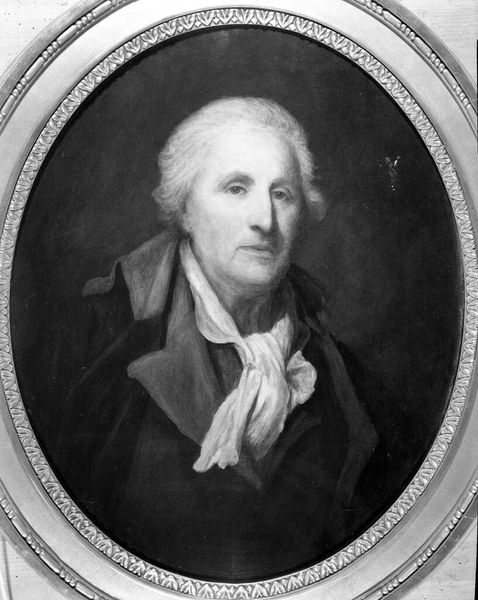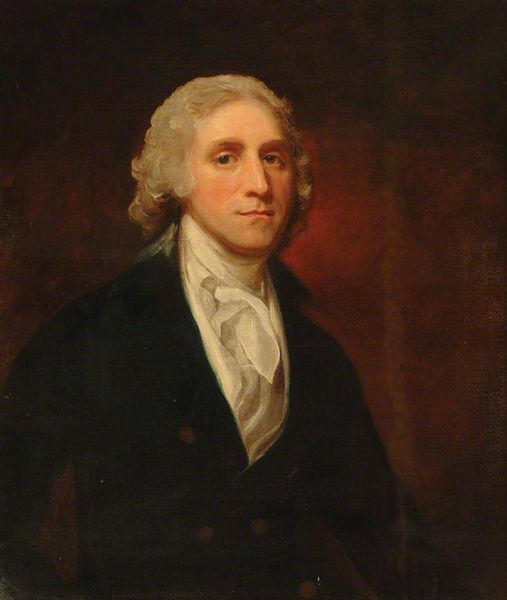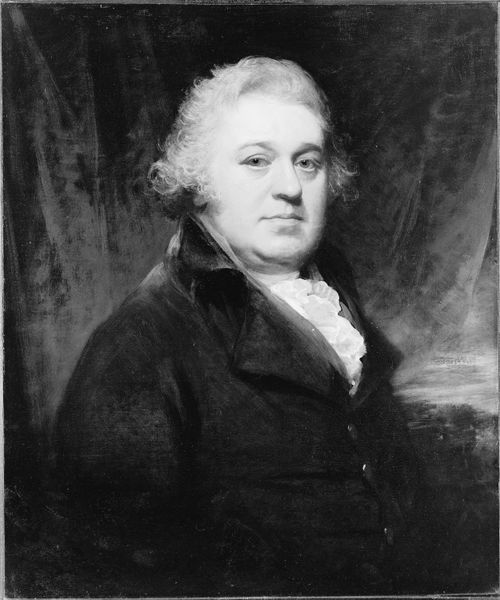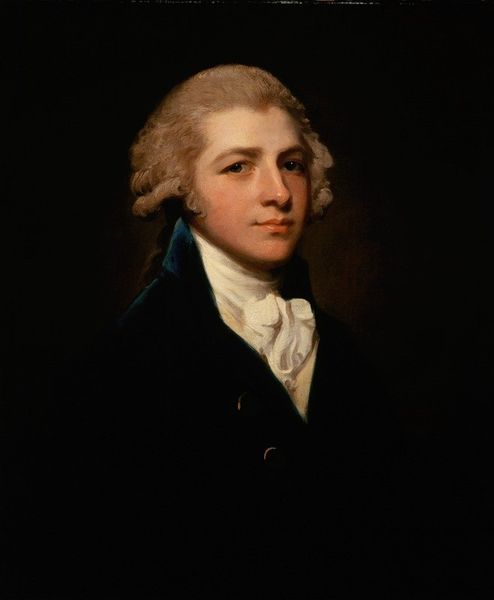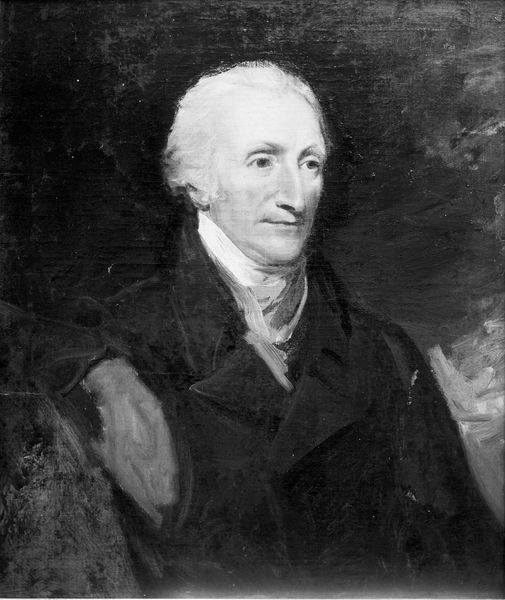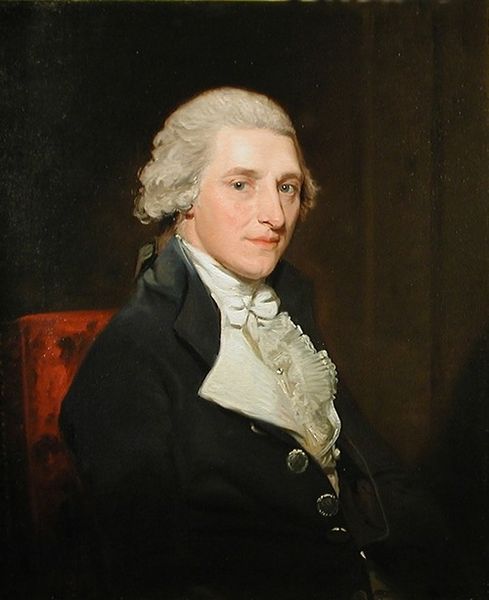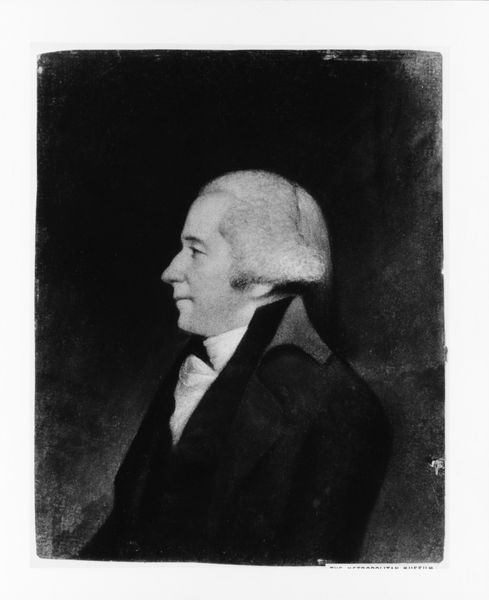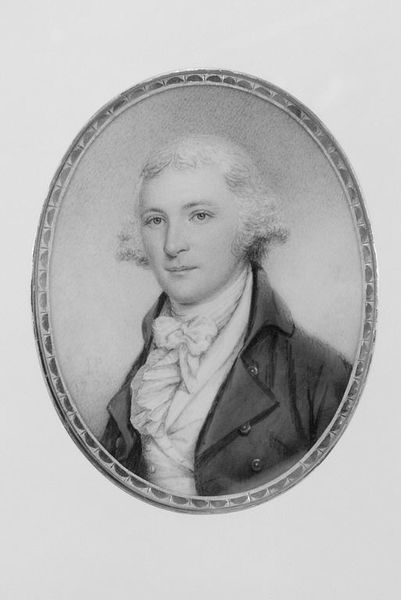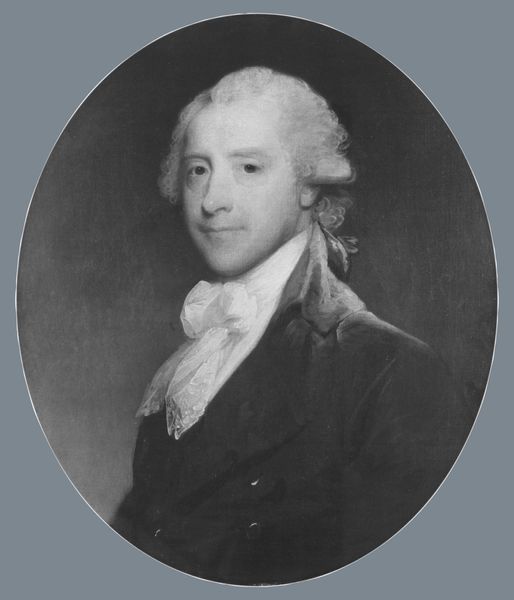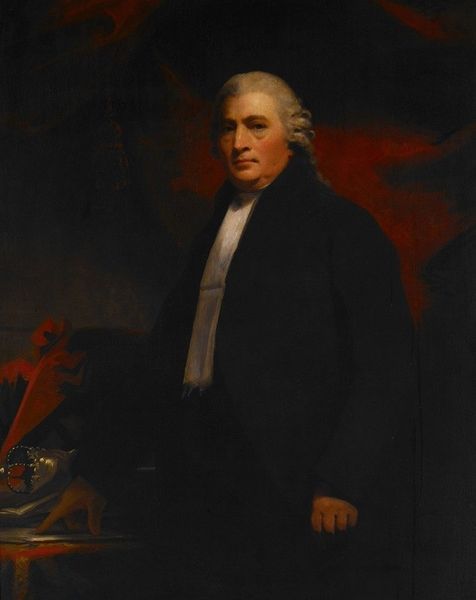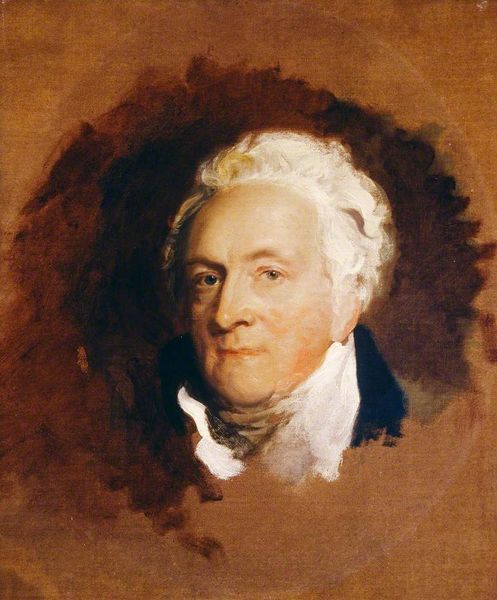
painting, oil-paint, oil-on-canvas
#
portrait
#
self-portrait
#
portrait
#
painting
#
oil-paint
#
classical-realism
#
romanticism
#
history-painting
#
academic-art
#
oil-on-canvas
#
realism
Dimensions: 64.1 × 76.2 cm (25 1/4 × 30 in.)
Copyright: Public Domain
Editor: So here we have John Hoppner’s “William Gifford,” painted around 1800. It’s an oil on canvas, currently residing here at the Art Institute of Chicago. There's a certain severity to his gaze that strikes me; almost intimidating. What jumps out at you? Curator: Oh, absolutely! It's a potent image, isn't it? To me, it feels like stepping back in time, encountering the spirit of the Romantic era head-on. It has me wondering, though: have you considered what the subject might be reading? And what's the meaning there? Editor: Hmm, the book… It makes me think of intellect and scholarship, fitting for the time. Could it symbolize something about his character? Curator: Precisely! Hoppner, capturing Gifford, a literary critic and satirist. Makes you wonder about the battles fought with words back then! See how Hoppner uses light? Notice the chiaroscuro, the dramatic contrast? It's as if Gifford is emerging from the shadows, his mind illuminated, ready to dissect some poor writer’s prose! Editor: It definitely adds to the intensity. Is that a common trait for portraits from that era? Curator: Yes, indeed. It's a Romantic ideal—highlighting the inner depths, the stormy emotions lurking beneath the surface. This era was all about feeling! How about the composition? See how Hoppner centers him, filling the frame, confident, self-assured. Almost confronting us. What do you make of it? Editor: It feels very deliberate, almost staging a power dynamic with the viewer. Like he's challenging you, in a way. Curator: Bang on! And that's the genius, isn't it? It makes you wonder about his beliefs and opinions. Food for thought about art, life, and how portraiture can reveal the spirit. Thank you! Editor: I never considered the gaze and the book that deeply, but I will next time. It does create more layers to unpack.
Comments
No comments
Be the first to comment and join the conversation on the ultimate creative platform.
